
The Gregorian Etruscan Museum: A Timeless Journey Through Ancient Etruria
Discover the rich heritage of the Etruscans at the Gregorian Etruscan Museum in Vatican City, home to stunning artifacts and timeless treasures from ancient Etruria.
Nestled within the sacred walls of Vatican City, the Gregorian Etruscan Museum offers a captivating glimpse into the ancient civilization of the Etruscans. Established by Pope Gregory XVI in 1837, this museum houses an extensive collection of artifacts that span centuries, providing a detailed narrative of the Etruscan way of life. From intricately designed pottery to grand tomb frescoes, the museum's exhibits tell the story of a people who laid the groundwork for Roman culture. As you wander through the museum's ten rooms, you will encounter a variety of objects that showcase the Etruscans' exceptional craftsmanship and artistic prowess. Highlights include the famous Etruscan bronze sculptures, such as the 'Mars of Todi,' and the exquisite collection of gold jewelry that reveals their advanced metallurgical skills. Each artifact is accompanied by informative descriptions that offer insight into the historical and cultural context of the Etruscan civilization. A visit to the Gregorian Etruscan Museum is not only a journey through ancient history but also a testament to the enduring legacy of the Etruscans. The museum's serene atmosphere, combined with its rich displays, makes it a must-visit destination for history enthusiasts and curious travelers alike. Whether you are an avid archaeologist or a casual tourist, the Gregorian Etruscan Museum promises an enriching experience that will leave you with a deeper appreciation for this ancient civilization.
Local tips in Gregorian Etruscan Museum
- Visit early in the morning to avoid crowds and enjoy a more peaceful experience.
- Consider taking a guided tour for detailed insights into the exhibits and Etruscan history.
- Allocate at least two hours to fully explore the museum's extensive collection.
- Combine your visit with a trip to the nearby Vatican Museums to make the most of your time in Vatican City.
- Check the museum's schedule for temporary exhibitions that may offer unique displays and artifacts.
The Gregorian Etruscan Museum: A Timeless Journey Through Ancient Etruria
Nestled within the sacred walls of Vatican City, the Gregorian Etruscan Museum offers a captivating glimpse into the ancient civilization of the Etruscans. Established by Pope Gregory XVI in 1837, this museum houses an extensive collection of artifacts that span centuries, providing a detailed narrative of the Etruscan way of life. From intricately designed pottery to grand tomb frescoes, the museum's exhibits tell the story of a people who laid the groundwork for Roman culture. As you wander through the museum's ten rooms, you will encounter a variety of objects that showcase the Etruscans' exceptional craftsmanship and artistic prowess. Highlights include the famous Etruscan bronze sculptures, such as the 'Mars of Todi,' and the exquisite collection of gold jewelry that reveals their advanced metallurgical skills. Each artifact is accompanied by informative descriptions that offer insight into the historical and cultural context of the Etruscan civilization. A visit to the Gregorian Etruscan Museum is not only a journey through ancient history but also a testament to the enduring legacy of the Etruscans. The museum's serene atmosphere, combined with its rich displays, makes it a must-visit destination for history enthusiasts and curious travelers alike. Whether you are an avid archaeologist or a casual tourist, the Gregorian Etruscan Museum promises an enriching experience that will leave you with a deeper appreciation for this ancient civilization.
When is the best time to go to Gregorian Etruscan Museum?
Iconic landmarks you can’t miss
Vatican Museums
Explore the Vatican Museums: A breathtaking journey through art, history, and spirituality in the heart of Vatican City.

St. Peter's Basilica
Discover the breathtaking artistry and spiritual essence of St. Peter's Basilica, a must-visit masterpiece in Vatican City.

Sistine Chapel
Explore the Sistine Chapel, where art and spirituality converge in a breathtaking display of Michelangelo's genius and history.
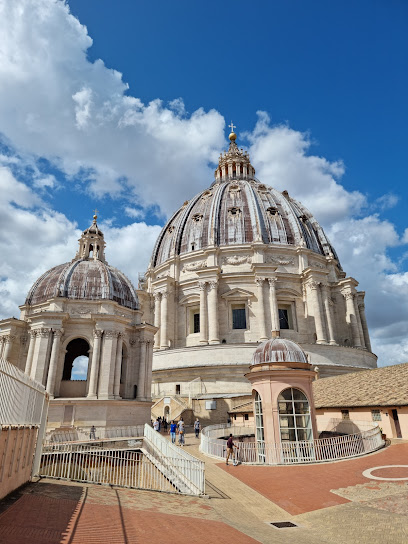
St. Peter Square Obelisk
Explore the majestic St. Peter's Square Obelisk, an iconic symbol of Vatican City, rich in history and surrounded by breathtaking architecture.

Gardens of Vatican City
Discover the stunning tranquility of the Gardens of Vatican City, a serene escape filled with history, beauty, and breathtaking landscapes in the heart of the Vatican.
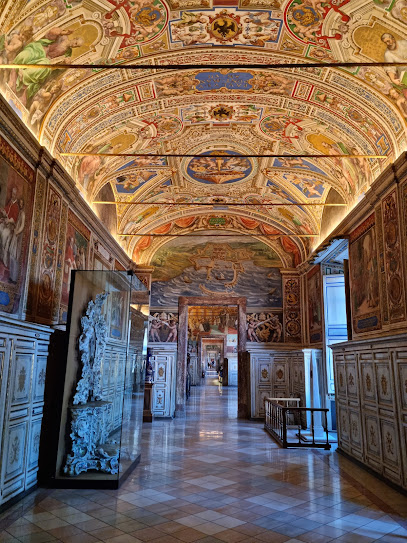
Apostolic Palace
Explore the Apostolic Palace, a historical landmark in Vatican City, and discover the rich heritage and artistic treasures of the Papal residence.

Vatican Necropolis
Discover the ancient mysteries of the Vatican Necropolis, a historical landmark beneath St. Peter's Basilica revealing early Christian burials and art.

Paintings Gallery of the Vatican Museums
Explore the Paintings Gallery of the Vatican Museums, home to masterpieces by Raphael and Caravaggio, a true treasure of Renaissance art.

Gallery of Maps
Explore the Gallery of Maps in Vatican City - A stunning blend of art and history captured in magnificent topographical maps of Italy.

Tomb of Saint Peter
Explore the Tomb of Saint Peter, a significant pilgrimage site in Vatican City, steeped in history and spirituality.

Pio-Clementine Museum
Explore the Pio-Clementine Museum in Vatican City, where ancient history and breathtaking art converge in a captivating journey through time.

Gregorian Egyptian Museum
Explore the wonders of ancient Egypt at the Gregorian Egyptian Museum, a highlight of the Vatican Museums, filled with unique artifacts and rich history.

Vatican Apostolic Archive
Discover centuries of ecclesiastical history at the Vatican Apostolic Archive, a treasure trove of documents that unveil the past.

Giardino Quadrato (o giardino segreto)
Explore the serene Giardino Quadrato in Vatican City, a hidden garden filled with lush greenery and tranquility, perfect for a peaceful retreat.

Octagonal Courtyard
Discover the Octagonal Courtyard in Vatican City, a masterpiece of Renaissance architecture and an essential stop for art and history enthusiasts.

Unmissable attractions to see
Trevi Fountain
Discover the stunning Trevi Fountain, a baroque masterpiece and iconic symbol of Rome, perfect for capturing unforgettable memories.

Colosseum
Discover the Colosseum, Rome's ancient amphitheater, where history comes alive through epic tales of gladiators and grand spectacles.

Pantheon
Experience the architectural brilliance and rich history of the Pantheon, a must-visit landmark in the heart of Rome, Italy.

Piazza Navona
Discover the beauty and history of Piazza Navona, a stunning Baroque square filled with art, culture, and vibrant Italian life.

St. Peter's Basilica
Explore the grandeur of St. Peter's Basilica, an architectural marvel and spiritual center in the heart of Vatican City, rich in history and art.

Castel Sant'Angelo
Explore the historic Castel Sant'Angelo in Rome, a magnificent castle blending rich history, art, and breathtaking views along the Tiber River.

Sistine Chapel
Explore the Sistine Chapel in Vatican City, where art, history, and spirituality converge in a breathtaking masterpiece of Renaissance art.

Villa Borghese
Experience the tranquility of Villa Borghese, Rome's iconic park, where art and nature harmoniously intertwine in a serene escape.

Circus Maximus
Explore the iconic Circus Maximus in Rome, an ancient chariot racing arena that brings history to life amidst a vibrant public park.

Papal Basilica of Saint Mary Major
Explore the Papal Basilica of Saint Mary Major, a stunning architectural marvel and a sacred site in the heart of Rome, featuring breathtaking mosaics and rich history.

Largo di Torre Argentina
Explore the historic Largo di Torre Argentina in Rome, a captivating archaeological site where ancient ruins and charming cats come together.

Villa d'Este
Discover the enchanting Villa d'Este in Tivoli, a UNESCO World Heritage site with stunning gardens and breathtaking Renaissance architecture.

Stadio Olimpico
Explore Stadio Olimpico in Rome, a landmark stadium for sports and music, embodying the vibrant spirit of the Eternal City.

Basilica of San Giovanni in Laterano
Experience the architectural grandeur and rich history of the Basilica of San Giovanni in Laterano, the heart of Rome's Catholic heritage.

Piazza Barberini
Explore the enchanting Piazza Barberini, a vibrant Roman square known for its stunning Baroque architecture and the famous Triton Fountain.

Essential places to dine
Pastasciutta
Experience authentic Italian cuisine at Pastasciutta, where fresh pasta meets affordability in the heart of Rome.

Ristorante dei Musei
Experience authentic Italian cuisine at Ristorante dei Musei in Rome – home to delicious pizzas and warm hospitality.

Caffè Delle Commari
Discover Caffè Delle Commari: A blend of exquisite coffee, creative cocktails, and authentic Italian cuisine in the heart of Rome.

La Soffitta Renovatio
Experience authentic Italian flavors at La Soffitta Renovatio – where every meal is a celebration of tradition and taste.

Borghiciana Pastificio Artigianale
Discover authentic Roman cuisine at Borghiciana Pastificio Artigianale, where fresh pasta meets traditional flavors in a charming setting.

Pizza Zizza
Experience authentic Italian cuisine at Pizza Zizza in Rome—where every slice tells a story of tradition and flavor.

Pinsa 'mpò - pinseria romana a roma prati vaticano
Experience the essence of Italian cuisine at Pinsa 'mpò – where authentic Roman pizza meets modern flavor.

Hostaria Dino e Tony
Experience authentic Italian dining at Hostaria Dino e Tony in Rome - where every dish tells a story.

Ristorante Arlù
Discover authentic Italian cuisine at Ristorante Arlù in Rome's enchanting Borgo Pio district - a culinary journey through Italy awaits.

Forno Feliziani
Discover authentic Roman pizza at Forno Feliziani - where tradition meets flavor in every slice.

La Locanda di Pietro
Discover La Locanda di Pietro: Authentic Italian Cuisine in Rome's Heart - A Culinary Journey Awaits You!

Cafe Risorgimento
Discover Café Risorgimento: Your go-to bistro in Rome for authentic coffee, delightful small plates, and sweet treats.

Spaghetti
Experience authentic Italian cuisine at Spaghetti, where tradition meets flavor in the heart of Rome.
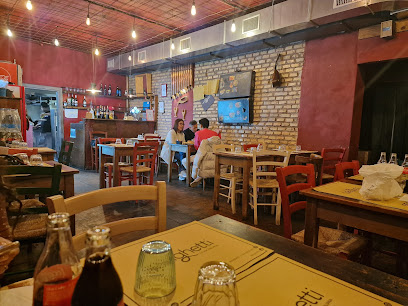
Ristorante Da Paolo
Experience authentic Italian cuisine at Ristorante Da Paolo in Rome—home to delicious pizzas and rich espresso amidst charming surroundings.

Trattoria Pizzeria Gli Archi
Experience authentic Italian cuisine at Trattoria Pizzeria Gli Archi in Rome—where tradition meets flavor in every dish.

Markets, malls and hidden boutiques
Murano Max Murano Glass Rome
Explore the exquisite world of Murano glass at Murano Max, a must-visit souvenir store in Rome that showcases authentic Italian artistry.
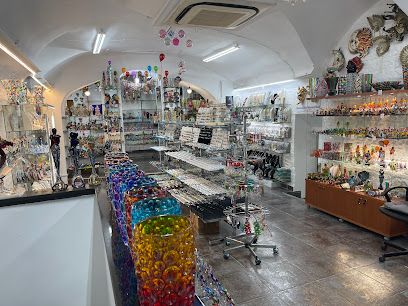
Flying Tiger Copenhagen
Explore Flying Tiger Copenhagen in Rome for quirky gifts, home goods, and toys that make unforgettable souvenirs.

Foot Locker
Explore Foot Locker in Rome for the latest in trendy sneakers and sportswear, embodying the spirit of fashion and functionality.

Pergamino Caffè
Discover the warmth and charm of Pergamino Caffè, a delightful coffee shop in Rome serving exceptional brews and pastries in a cozy atmosphere.

Vatican Pharmacy
Discover the Vatican Pharmacy: A unique destination for health products and exclusive local souvenirs in the heart of Vatican City.

Annona Vatican City
Explore Annona Vatican City for a unique grocery shopping experience filled with local produce and authentic Italian flavors.

Savelli Religious (Savelli Art and Tradition)
Explore Savelli Religious in Rome for unique religious gifts and exquisite jewelry, capturing the essence of Italian craftsmanship and spirituality.

Mondo Cattolico
Discover authentic religious goods and unique souvenirs at Mondo Cattolico, a charming store in the heart of Vatican City.

St. Peter's Gallery
Explore St. Peter's Gallery for unique souvenirs, delightful coffee, and a taste of Roman culture near St. Peter's Basilica.
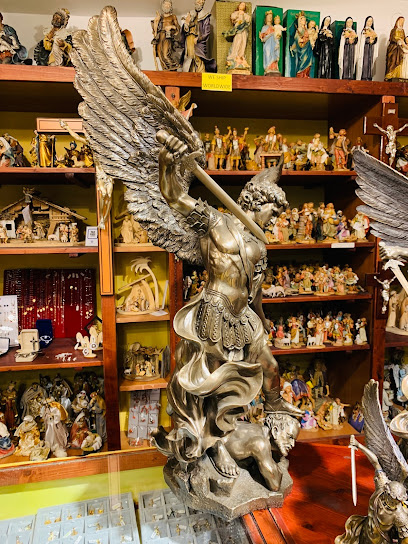
Vatican Emporium - Religious Articles & Gifts
Discover the Vatican Emporium, your go-to destination for authentic religious artifacts and unique gifts steeped in spiritual significance.

Domus Artis
Explore Domus Artis in Rome for an exceptional collection of art, church supplies, and unique souvenirs reflecting Italy's rich cultural heritage.

La Caffeteria
Experience the charm of Rome at La Caffeteria, where every cup tells a story of Italian coffee tradition and local flair.

Tourist Information Office
Discover Vatican City's souvenirs and essential travel tips at the Tourist Information Office in the heart of Piazza San Pietro.

Intimissimi
Explore Intimissimi in Rome for exquisite women's lingerie and clothing that perfectly balance elegance and comfort, showcasing the best of Italian fashion.

Soliani Roma
Discover the finest leather goods and unique designs at Soliani Roma, a must-visit destination for fashion lovers in the heart of Rome.

Essential bars & hidden hideouts
Caffè Delle Commari
Experience the authentic flavors of Italy at Caffè Delle Commari, a charming bar and coffee shop in the heart of Rome, perfect for coffee lovers and cocktail enthusiasts alike.
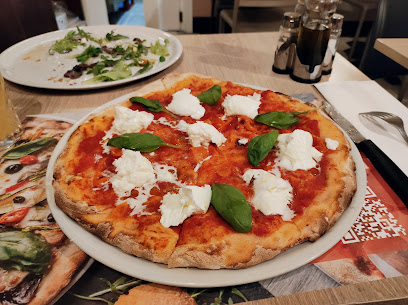
Be.Re. + Trapizzino
Experience the best of Roman street food at Be.Re. + Trapizzino, where tradition meets innovation in a lively gastropub atmosphere.
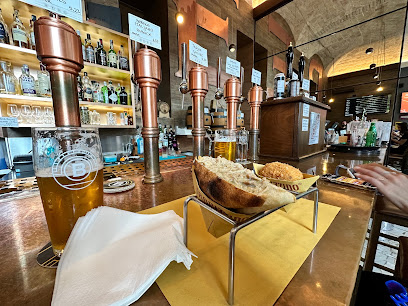
Wine Bar De' Penitenzieri
Experience the best of Italian wines at Wine Bar De' Penitenzieri, a cozy retreat in the heart of Rome, perfect for wine lovers and foodies.

Caffè Vaticano
Discover the authentic taste of Italian coffee at Caffè Vaticano, a beloved espresso bar in the heart of Rome, perfect for tourists seeking a local experience.
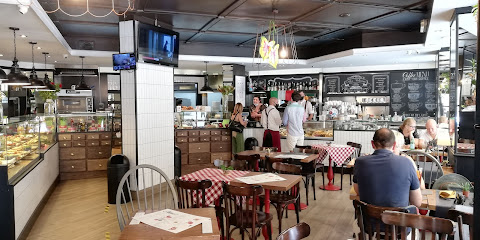
Bar L'Ottagona
Discover the essence of Roman hospitality at Bar L'Ottagona, where authentic cuisine meets a vibrant atmosphere in the heart of Rome.

Cafe San Pietro
Discover Cafe San Pietro, a charming café near St. Peter's Basilica, offering authentic Italian coffee and pastries in a cozy setting.

Saxophone Live Pub
Experience the vibrant nightlife of Rome at Saxophone Live Pub, where music and culture intertwine for an unforgettable evening.

Birreria Martini Esperienza Tedesca
Discover the vibrant German beer hall experience at Birreria Martini in Rome, where authentic cuisine meets a lively atmosphere.
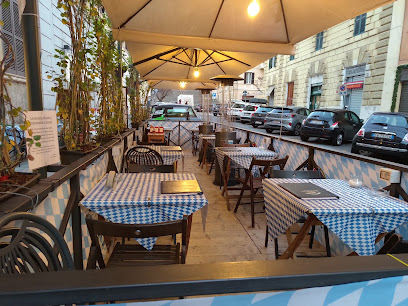
Giuly's Café
Discover the heart of Italian cuisine at Giuly's Café, where tradition meets taste in the charming streets of Rome.
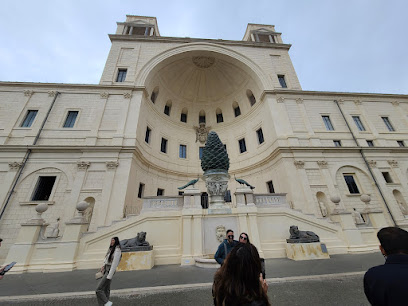
American bar - Vecchio Borgo S.r.l.
Experience American-style cocktails and indulgent sundaes in Rome at Vecchio Borgo S.r.l., where hospitality meets deliciousness.

Derry Rock Pub
Discover Derry Rock Pub, a lively Irish pub in Rome, offering cocktails, live music, and a taste of Irish culture in the heart of Italy.
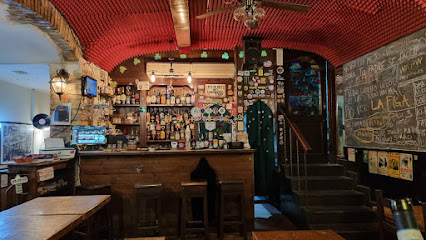
Caffè Leonina
Experience the essence of Roman culture at Caffè Leonina, a charming bar offering authentic Italian coffee in a picturesque setting.

Bar Delle Grazie
Explore the charming Bar Delle Grazie in Rome, where authentic Italian coffee and pastries meet a welcoming atmosphere.

EXPRESSODRG
Discover the charm of EXPRESSODRG, a cozy cafe and bar & grill in Rome, perfect for breakfast, lunch, or a refreshing evening drink.

Bar Angeli
Experience the vibrant flavors of Rome at Bar Angeli, a charming grill bar offering delicious dishes and a warm, welcoming atmosphere.

Travel experiences inspired by this city
Explore more travel diariesLocal Phrases
-
- HelloCiao
[chow] - GoodbyeArrivederci
[ahr-ree-veh-DEHR-chee] - YesSì
[see] - NoNo
[noh] - Please/You're welcomePer favore/Prego
[pehr fah-VOH-reh/PRAY-goh] - Thank youGrazie
[GRAH-tsyeh] - Excuse me/SorryMi scusi/Scusa
[mee SKOO-zee/SKOO-zah] - How are you?Come stai?
[KOH-meh stai] - Fine. And you?Bene. E tu?
[BEH-neh. eh too] - Do you speak English?Parli inglese?
[PAHR-lee een-GLEH-zeh] - I don't understandNon capisco
[non kah-PEES-koh]
- HelloCiao
-
- I'd like to see the menu, pleaseVorrei vedere il menù, per favore
[vohr-RAY veh-DEH-reh eel meh-NOO pehr fah-VOH-reh] - I don't eat meatNon mangio carne
[non MAHN-joh KAR-neh] - Cheers!Salute!
[sah-LOO-teh] - I would like to pay, pleaseVorrei pagare, per favore
[vohr-RAY pah-GAH-reh pehr fah-VOH-reh]
- I'd like to see the menu, pleaseVorrei vedere il menù, per favore
-
- Help!Aiuto!
[ah-YOO-toh] - Go away!Vattene!
[VAHT-teh-neh] - Call the Police!Chiamate la polizia!
[kyah-MAH-teh lah poh-LEE-tsya] - Call a doctor!Chiamate un dottore!
[kyah-MAH-teh oon doh-TAW-reh] - I'm lostMi sono perso
[mee SOH-no PEHR-soh] - I'm illSto male
[stoh MAH-leh]
- Help!Aiuto!
-
- I'd like to buy...Vorrei comprare...
[vohr-RAY kohm-PRah-reh] - I'm just lookingSto solo guardando
[stoh SOH-loh gwar-DAHN-doh] - How much is it?Quanto costa?
[KWAHN-toh KOS-tah] - That's too expensiveÈ troppo caro
[eh TROH-poh KAH-roh] - Can you lower the price?Può abbassare il prezzo?
[pwoh ahb-bah-SAH-reh eel PRET-zoh]
- I'd like to buy...Vorrei comprare...
-
- What time is it?Che ore sono?
[keh OH-reh SOH-noh] - It's one o'clockÈ l'una
[eh LOO-nah] - Half past (10)Sono le dieci e mezza
[SOH-no leh dyeh-CHEE eh MEHT-tsah] - MorningMattina
[maht-TEE-nah] - AfternoonPomeriggio
[poh-meh-REE-joh] - EveningSera
[SEH-rah] - YesterdayIeri
[YEH-ree] - TodayOggi
[OH-jee] - TomorrowDomani
[doh-MAH-nee] - 1Uno
[OO-no] - 2Due
[DOO-eh] - 3Tre
[TREH] - 4Quattro
[KWAH-troh] - 5Cinque
[CHEEN-kweh] - 6Sei
[SEH-ee] - 7Sette
[SEHT-teh] - 8Otto
[OH-ttoh] - 9Nove
[NOH-veh] - 10Dieci
[DYEH-chee]
- What time is it?Che ore sono?
-
- Where's a/the...?Dov'è...?
[doh-VEH] - What's the address?Qual è l'indirizzo?
[kwahl eh leen-DEER-eet-tsaw] - Can you show me (on the map)?Può mostrarmi (sulla mappa)?
[pwoh moh-STRAHR-mee SOOL-lah MAHP-pah] - When's the next (bus)?Quando è il prossimo (autobus)?
[KWAHN-doh eh eel PROHS-si-moh OW-toh-boo] - A ticket (to ....)Un biglietto (per ....)
[oon beelyeh-TTO pehr]
- Where's a/the...?Dov'è...?
History of Gregorian Etruscan Museum
-
The Gregorian Etruscan Museum was founded by Pope Gregory XVI in 1837. Its establishment was part of a broader initiative to preserve the rich archaeological heritage of Italy, with a particular focus on Etruscan artifacts. The museum was intended to house the numerous discoveries from the Etruscan civilization, which thrived in Italy before the rise of Rome.
-
The museum boasts one of the world's most comprehensive collections of Etruscan artifacts. Among its treasures are intricately crafted pottery, bronze sculptures, and gold jewelry. The collection also includes the famous Sarcophagus of the Spouses, a finely carved terracotta monument depicting a reclining couple, which offers invaluable insights into Etruscan funerary practices and social customs.
-
Over the years, the Gregorian Etruscan Museum has undergone several expansions and renovations to accommodate its growing collection and to enhance the visitor experience. Notably, in the early 20th century, additional galleries were added to display newly acquired artifacts. Modernization efforts in recent decades have ensured that the museum remains a state-of-the-art facility, equipped with advanced climate control and security systems.
-
The museum's collection has been significantly enriched by numerous archaeological excavations in various parts of Italy, particularly in the regions of Tuscany, Umbria, and Lazio. These excavations have unearthed a wealth of Etruscan artifacts, ranging from everyday household items to elaborate ceremonial objects. Each discovery has provided new insights into the Etruscan way of life, their religious beliefs, and their interactions with neighboring cultures.
-
The Gregorian Etruscan Museum is not only a repository of ancient artifacts but also a center for education and cultural exchange. It regularly hosts temporary exhibitions, educational workshops, and lectures that delve into various aspects of Etruscan history and culture. These initiatives are designed to engage both scholars and the general public, fostering a deeper appreciation of Italy's ancient heritage.
-
Among the museum's many significant exhibits is the Regolini-Galassi Tomb, one of the richest Etruscan tombs ever discovered. Excavated in Cerveteri in 1836, the tomb contained a wealth of grave goods, including gold ornaments, silver vessels, and intricately decorated bronze objects. The artifacts from this tomb provide a glimpse into the opulence and sophistication of Etruscan society.
-
The Gregorian Etruscan Museum is an integral part of the Vatican Museums, one of the largest and most visited museum complexes in the world. As part of this esteemed institution, the Gregorian Etruscan Museum contributes to the Vatican Museums' mission of preserving and showcasing humanity's artistic and cultural heritage. Its collections complement those of other museums within the complex, offering a comprehensive view of ancient civilizations.
-
The Gregorian Etruscan Museum plays a crucial role in advancing research on the Etruscan civilization. It collaborates with academic institutions and researchers worldwide, providing access to its collections for study and analysis. The museum's findings have been published in numerous scholarly articles and monographs, contributing to the growing body of knowledge on the Etruscans.
Gregorian Etruscan Museum Essentials
-
The Gregorian Etruscan Museum is located within the Vatican City. The nearest international airport is Leonardo da Vinci International Airport (Fiumicino) in Rome, approximately 30 kilometers away. From the airport, you can take a train to Roma Termini, the main railway station in Rome, and then a metro to Ottaviano-San Pietro station, which is a short walk from the Vatican Museums entrance.
-
Within Rome, the most convenient way to reach Vatican City is by using the metro system. Take Line A (the orange line) to Ottaviano-San Pietro station. From there, it's a 10-minute walk to the Vatican Museums entrance. Alternatively, buses 49, 32, 81, and 982 stop near the Vatican. Taxis and ride-sharing services are also readily available throughout the city.
-
The official currency in Vatican City is the Euro (€). Credit and debit cards are widely accepted, especially in the Vatican Museums and surrounding areas. However, it's advisable to carry some cash for small purchases and in case of any technical issues with card machines. ATMs are available near the museum entrance and around Vatican City.
-
Vatican City and the surrounding areas are generally safe for tourists. However, be cautious of pickpockets, especially in crowded areas and public transport. Avoid carrying large amounts of cash and keep your belongings secure. There are no specific high-crime areas targeting tourists, but always stay vigilant and aware of your surroundings.
-
In case of an emergency, dial 112 for immediate assistance. The Vatican City has its own security and emergency services, but Italian emergency services can also respond quickly. It's recommended to have travel insurance that covers medical emergencies. For minor health issues, nearby pharmacies in Rome can provide over-the-counter medications.
-
Fashion: Do dress modestly, especially when visiting religious sites. Avoid wearing revealing clothing. Religion: Do respect local customs and traditions. Always cover your shoulders and knees when entering religious sites. Public Transport: Do be respectful and give up your seat to elderly passengers. Don't eat or drink on public transport. Greetings: Do greet people with a polite 'Buongiorno' (Good Morning) or 'Buonasera' (Good Evening). Eating & Drinking: Do try local delicacies and accept food offerings graciously. Don’t refuse hospitality, as it is considered impolite.
-
To experience the Gregorian Etruscan Museum like a local, consider visiting early in the morning or late in the afternoon to avoid the largest crowds. Purchase tickets in advance online to skip the long queues. Take your time to explore each exhibit, as the museum houses an extensive collection of Etruscan artifacts. Don’t miss the Etruscan jewelry section, which is a highlight.
Trending Landmark in Gregorian Etruscan Museum
-
Vatican Museums
-
St. Peter's Basilica
-
Sistine Chapel
-
St. Peter Square Obelisk
-
Gardens of Vatican City
-
Apostolic Palace
-
Vatican Necropolis
-
Paintings Gallery of the Vatican Museums
-
Gallery of Maps
-
Tomb of Saint Peter
-
Pio-Clementine Museum
-
Gregorian Egyptian Museum
-
Vatican Apostolic Archive
-
Giardino Quadrato (o giardino segreto)
-
Octagonal Courtyard
Nearby Cities to Gregorian Etruscan Museum
-
Things To Do in Vatican Museums
-
Things To Do in Vatican Pinacoteca
-
Things To Do in Apostolic Palace
-
Things To Do in Sistine Chapel
-
Things To Do in Vatican Gardens
-
Things To Do in St. Peter's Basilica
-
Things To Do in St. Peter's Square
-
Things To Do in Vatican Necropolis
-
Things To Do in Rome
-
Things To Do in Orvieto
-
Things To Do in Assisi
-
Things To Do in Perugia
-
Things To Do in Montepulciano
-
Things To Do in Arezzo
-
Things To Do in Siena












